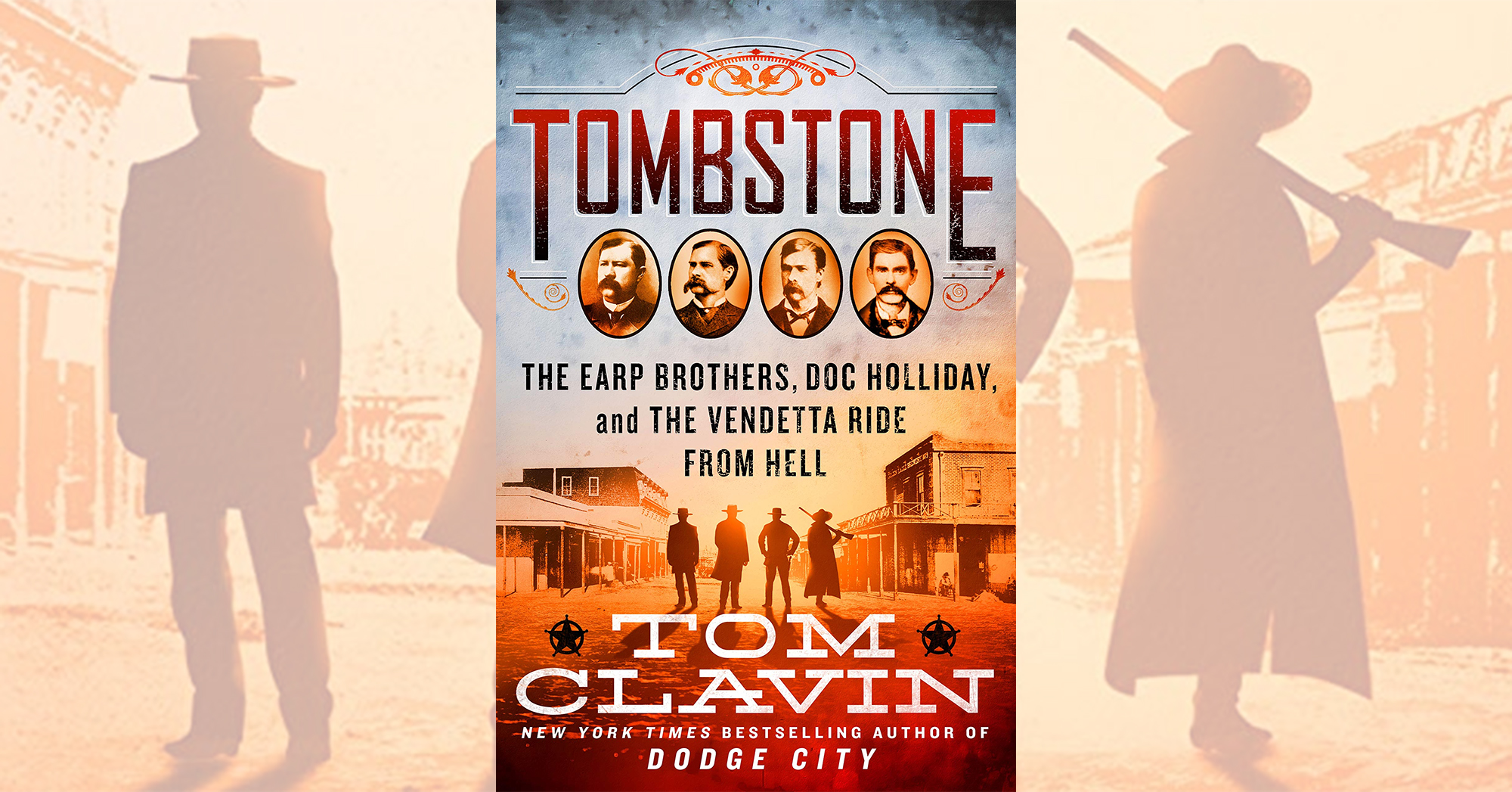Tombstone: The Earp Brothers, Doc Holliday and the Vendetta Ride from Hell, by Tom Clavin, St. Martin’s Press, New York, 2020, $29.99
In 2012 Jeff Guinn gave us The New York Times best seller The Real Story of the Shootout at the O.K. Corral—And How It Changed the American West. The Wild West’s best known (and most written about) gunfight had already been dealt with in fine fashion in Casey Tefertiller’s 1999 biography of Wyatt Earp and Gary Roberts’ 2007 biography of Doc Holliday, and it would get further treatment in the 2019 book A Wyatt Earp Anthology: Long May His Story Be Told (reviewed in the February 2020 Wild West). That raises the question: Do we really need another book that covers the October 1881 Tombstone fight, along with what led up to it and its equally violent aftermath?
Publishers certainly think so, primarily because Earp, Holiday and the tussling in old Tombstone sell. Tom Clavin’s Tombstone: The Earp Brothers, Doc Holliday and the Vendetta From Hell is due out in April 2020, just a month after John Boessenecker’s Ride the Devil’s Herd: Wyatt Earp’s Epic Battle Against the West’s Biggest Outlaw Gang (reviewed above). Clavin thinks so, too, of course. “One reason I wrote Tombstone was to gain a sense of completion,” he writes. “Dodge City had been written first, then Wild Bill, and suddenly there needed to be a third volume of an unanticipated but apparently welcome ‘Frontier Lawmen’ trilogy.…I wanted to tell my version of the Tombstone story, to have it refracted through my lens, and along the way provide new and previously overlooked characters and details.” Clavin had a lot of material to sift through. He quotes various authors directly in the text and gives special recognition to the must-read biographies written by Tefertiller and Roberts.
Most readers, even those who have kept up with earlier writings on the subject, should enjoy Clavin’s Tombstone, as he covers the familiar ground smoothly and concisely in a five-act presentation: Act 1: The Territory, Act II: The Brothers, Act III: The Cowboys, Act IV: The Gunfight and Act V: The Vendetta. He slips in mini biographies of the many figures without disrupting the narrative flow. And he has a way with words. For instance, he opens Chapter 18, “Rather Die Fighting,” this way: “It is never a good sign for law-abiding citizens to see Johnny Ringo rush into town, both him and his horse all in a lather. So it had to raise eyebrows in Tombstone on September 9 when the cowboy leader made such a dramatic entrance.” He also provides his share of insight. For example, in Chapter 25, “A Smoldering Fire,” he touches on why the Earp brothers didn’t leave Tombstone after Justice of the Peace Wells Spicer ruled there was no basis to put them or Holliday on trial for what they did in the gunfight. They still had their business interests (mines, Wyatt’s faro games, etc.) for one thing. But the main reason, the author suggests, was their stubbornness and clannish pride, adding, “They did not want it to appear that the gunfight or the threatening presence of the Cowboys chased them out of Tombstone.” So, once more, do we really need another book on this subject? Why the heck not, at least when the writer is Clavin, whose third book in his trilogy once again delivers entertaining history.
—Editor





